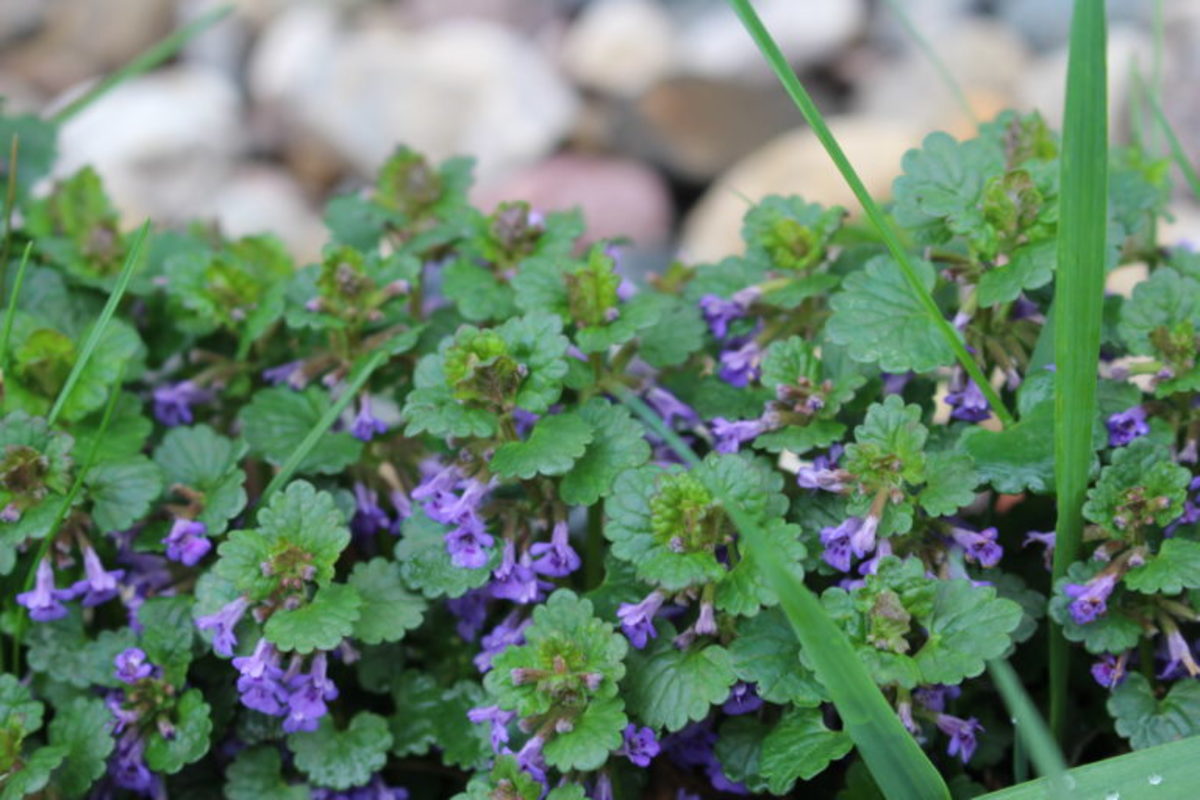
 5
5




 I discovered this mystery plant, with a little help from me eliminating competition, would shade out grass seeds. This resulted in less work weeding for me. I think it took me three YEARS to figure that out. Pictures from seedling to carpet, are at the below site, as it is currently missing in my garden! Shrug.
I discovered this mystery plant, with a little help from me eliminating competition, would shade out grass seeds. This resulted in less work weeding for me. I think it took me three YEARS to figure that out. Pictures from seedling to carpet, are at the below site, as it is currently missing in my garden! Shrug.

![Filename: seedling.jpg
Description: [Thumbnail for seedling.jpg]](/t/90193/a/63246/seedling.jpg)
![Filename: 4-in..jpg
Description: [Thumbnail for 4-in..jpg]](/t/90193/a/63247/4-in..jpg)
![Filename: 18-in..jpg
Description: [Thumbnail for 18-in..jpg]](/t/90193/a/63248/18-in..jpg)
![Filename: 3-ft.-Side-View.jpg
Description: [Thumbnail for 3-ft.-Side-View.jpg]](/t/90193/a/63249/3-ft.-Side-View.jpg)
![Filename: Root-Nodes.jpg
Description: [Thumbnail for Root-Nodes.jpg]](/t/90193/a/63250/Root-Nodes.jpg)
![Filename: Seedhead-Progression.jpg
Description: [Thumbnail for Seedhead-Progression.jpg]](/t/90193/a/66094/Seedhead-Progression.jpg)
 1
1




Standing on the shoulders of giants. Giants with dirt under their nails








 1
1





 2
2





 1
1




 2
2




 2
2




 4
4








Iterations are fine, we don't have to be perfect
My 2nd Location:Florida HardinessZone:10 AHS:10 GDD:8500 Rainfall:2in/mth winter, 8in/mth summer, Soil:Sand pH8 Flat








 2
2














 1
1




![Filename: Asian-Grass-Seedling.jpg
Description: [Thumbnail for Asian-Grass-Seedling.jpg]](/t/90193/a/63299/Asian-Grass-Seedling.jpg)
![Filename: Asian-Grass-6-in.-Tall.jpg
Description: [Thumbnail for Asian-Grass-6-in.-Tall.jpg]](/t/90193/a/63300/Asian-Grass-6-in.-Tall.jpg)
![Filename: Asian-Grass-with-Seed.jpg
Description: [Thumbnail for Asian-Grass-with-Seed.jpg]](/t/90193/a/63301/Asian-Grass-with-Seed.jpg)
![Filename: Asian-Grass-Seeds.jpg
Description: [Thumbnail for Asian-Grass-Seeds.jpg]](/t/90193/a/63302/Asian-Grass-Seeds.jpg)
 1
1




Invasive plants are Earth's way of insisting we notice her medicines. Stephen Herrod Buhner
Everyone learns what works by learning what doesn't work. Stephen Herrod Buhner


















Invasive plants are Earth's way of insisting we notice her medicines. Stephen Herrod Buhner
Everyone learns what works by learning what doesn't work. Stephen Herrod Buhner




Anne Miller wrote:I have let the spurge go this summer. I am sure it helps shade the soil though I am sure that it is dropping hundreds of seeds.
With temps of 115, it is about all I can do to keep the plants watered. I lost one echinacea most likely due to poor soil and being eaten by a deer.
SPURGE:


Bless your Family,
Mike




![Filename: weed-unknown.jpg
Description: [Thumbnail for weed-unknown.jpg]](/t/90193/a/66037/weed-unknown.jpg)
![Filename: same-weed-at-top-what-I-call-henbit.jpg
Description: [Thumbnail for same-weed-at-top-what-I-call-henbit.jpg]](/t/90193/a/66038/same-weed-at-top-what-I-call-henbit.jpg)
Bless your Family,
Mike












Michael Moreken wrote:
Another name for Spurge, Carpet Weed?

'What we do now echoes in eternity.' Marcus Aurelius
How Permies Works Dr. Redhawk's Epic Soil Series












Michael Moreken wrote:Another I call henbit that has clover like leaves and yellow flowers. Young henbit has a purple look to the early leaves.

'What we do now echoes in eternity.' Marcus Aurelius
How Permies Works Dr. Redhawk's Epic Soil Series





Invasive plants are Earth's way of insisting we notice her medicines. Stephen Herrod Buhner
Everyone learns what works by learning what doesn't work. Stephen Herrod Buhner




Bless your Family,
Mike
 1
1





|
Poop goes in a willow feeder. Wipe with this tiny ad:
The new gardening playing cards kickstarter is now live!
https://www.kickstarter.com/projects/paulwheaton/garden-cards
|








